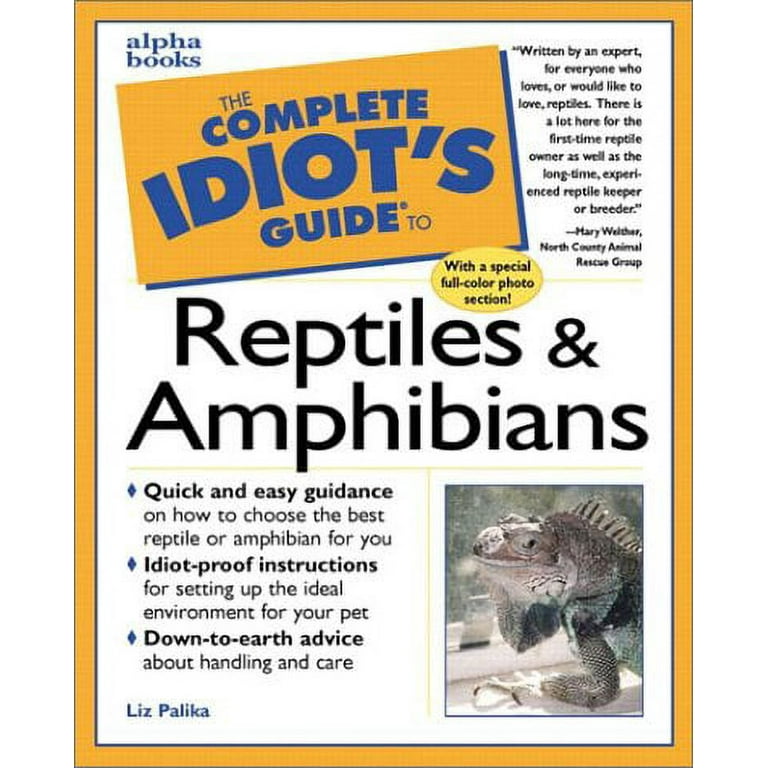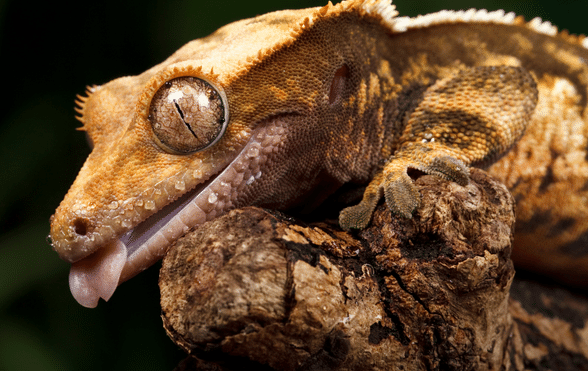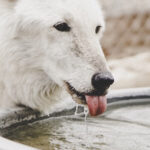Choosing the right lizard species as a beginner pet owner requires considering factors such as size, care requirements, and temperament. It’s important to research and understand the specific needs of different lizard species before making a decision.
As a first-time pet owner interested in lizards, you’ll want to select a species that is low maintenance and well-suited for beginners. Factors to consider include the size of the lizard, its habitat requirements, and its temperament. Additionally, it’s crucial to choose a species that is readily available and legal to own in your area.
By doing thorough research and seeking advice from experienced reptile owners, you can make an informed decision and provide a suitable environment for your new pet. In this guide, we’ll explore some popular lizard species that are ideal for beginners and provide insights into their care requirements.

Credit: www.walmart.com
Why Choose Lizards As Pets?
Why choose lizards as pets?
Low Maintenance
Lizards make fantastic pets for beginners due to their low maintenance needs. They require minimal grooming, and their habitat setups don’t demand frequent cleaning compared to other traditional pets, making them an excellent choice for those with busy schedules.
Fascinating Behavior
Lizards exhibit fascinating behavior that captivates pet owners. From their unique hunting techniques to their response to environmental stimuli, observing a lizard can be an educational and engaging experience for both adults and children.

Credit: www.amazon.com
Factors To Consider Before Choosing A Lizard
When considering a lizard as a pet, there are important factors to take into account to ensure the well-being of your new reptilian friend. Knowing what to consider before choosing a lizard can make a big difference in the success of your reptile keeping experience.
Size And Space Requirements
Lizards come in various sizes, and each species has different space requirements. Before choosing a lizard, it’s crucial to consider the adult size of the species you’re interested in. Small lizards like geckos may only need a 10-gallon tank, while larger species such as bearded dragons will require a 40-gallon or larger enclosure to thrive. The size and layout of the enclosure should also allow for natural behaviors like climbing, burrowing, and basking.
Temperature And Humidity Needs
Lizards are ectothermic, meaning they rely on external sources of heat to regulate their body temperature. It’s essential to create a suitable thermal gradient within the enclosure, providing a warm basking spot and cooler areas. Humidity levels also play a vital role, and different species have diverse humidity requirements. Researching the specific temperature and humidity needs of the lizard species you’re interested in is key to maintaining their health and well-being.
Dietary Preferences
Understanding the dietary preferences of the lizard species is crucial for their proper nutrition and overall health. Some lizards are insectivores, while others may require a varied diet of insects, fruits, and vegetables. Proper supplementation and gut-loading of feeder insects may also be necessary to ensure the lizard receives essential nutrients. The dietary needs of each species should be thoroughly researched and understood before making a decision.
Best Lizard Species For Beginners
Choosing the right lizard species as a beginner pet owner is crucial to ensure a positive and rewarding pet ownership experience. While many lizards may catch your eye, not all of them are suitable for novice reptile enthusiasts. It’s essential to select a lizard that is easy to care for, has a docile temperament, and requires minimal maintenance. In this article, we will explore three of the best lizard species for beginners: Leopard geckos, Crested geckos, and Bearded dragons.
Leopard Geckos
Leopard geckos are popular among first-time reptile owners due to their low maintenance requirements and friendly nature. These small-sized lizards are native to arid regions of Afghanistan, Pakistan, and India. Leopard geckos are known for their striking appearance, with their spotted and patterned skin. They come in various colors, including orange, yellow, and white. Here are a few reasons why they make great pets:
- Leopard geckos have an easy-to-follow diet consisting mainly of insects such as crickets and mealworms. This makes feeding them a hassle-free task.
- They are nocturnal creatures, making them an excellent choice for individuals who are not available during the daytime.
- Leopard geckos are generally calm and docile, making them easy to handle and interact with.
Crested Geckos
Crested geckos are another fantastic lizard species for beginners. Originating from New Caledonia, these small-sized lizards have gained popularity in the reptile pet trade due to their unique appearance and low maintenance needs. Here’s why Crested geckos are an excellent choice for first-time reptile owners:
- They have a simple diet consisting of commercially available powdered gecko food, eliminating the need for live insects.
- Crested geckos are arboreal, meaning they spend most of their time climbing and perching on branches. This makes their enclosure setup relatively easy.
- They are known for their friendly temperament and tolerate handling well, making them great pets for those who enjoy interaction.
Bearded Dragons
Bearded dragons are a popular choice for beginners due to their sociable nature, ease of care, and captivating appearance. Originating from Australia, these reptiles are medium-sized and have unique spiky beards, which they use as a display during courtship or threat. Here’s why Bearded dragons are an ideal lizard species for beginners:
- They have a diverse omnivorous diet, consuming both live insects and leafy greens, making it easier to provide a balanced diet.
- Bearded dragons are known for their friendly and social behavior. They enjoy interacting with their owners, often displaying curiosity and affection.
- These lizards have a relatively long lifespan compared to other reptiles, which means you can enjoy their companionship for many years.
When choosing a lizard species, it’s important to consider your lifestyle, available time for care and interaction, and personal preferences. While these three lizard species are well-suited for beginners, be sure to do further research and consult with an experienced reptile owner or veterinarian to determine the best fit for you. By selecting the right lizard, you’re setting yourself up for a rewarding and enjoyable journey into the world of reptile pet ownership.
Credit: archive.org
Setting Up The Ideal Lizard Habitat
Setting up the ideal lizard habitat is crucial to ensure the well-being and happiness of your new reptile companion. As a beginner pet owner, it’s important to create an environment that closely mimics the lizard’s natural habitat, providing them with a safe and comfortable space to live.
Choosing The Right Terrarium
The first step in setting up the perfect lizard habitat is selecting the right terrarium. Consider factors such as the size of the lizard species you have chosen, as well as their natural habitat requirements. Ensure that the terrarium is spacious enough for your lizard to move around, with enough room for climbing and hiding.
Terrarium Checklist:
- Choose a terrarium that is at least 40 gallons in size to accommodate small lizards.
- If you have a larger lizard species, opt for a terrarium that is 75 gallons or more.
- Ensure the terrarium has a secure lid to prevent escapes.
- Use glass or plastic enclosures that provide proper ventilation.
Providing Proper Lighting And Heating
Lizards require specific lighting and heating conditions to thrive.
Lighting:
- Place a full-spectrum UVB light in the terrarium to provide lizards with the necessary UV rays for vitamin D synthesis.
- Ensure the light is placed within the recommended distance from the basking area, based on the manufacturer’s instructions.
- Keep the light on for 10-12 hours a day to mimic natural daylight patterns.
Heating:
- Install a heat source, such as a ceramic heat emitter, to maintain the appropriate temperature gradient in the terrarium.
- Use a thermometer to monitor temperature levels and ensure they fall within the recommended range for your specific lizard species.
- Provide a basking spot with a temperature around 90-95°F for lizards to regulate their body temperature.
Creating Hiding Spots And Climbing Areas
A lizard’s natural instinct is to seek shelter and climb. Providing ample hiding spots and climbing areas in the terrarium is essential for their mental and physical well-being.
Hiding spots:
- Add various hiding spots using rocks, branches, or commercially available reptile hideouts.
- Ensure the hiding spots are easily accessible and provide a sense of security for your lizard.
- Place them at different levels within the terrarium to promote exploration and mimic their natural habitat.
Climbing areas:
- Include branches, vines, or driftwood in the terrarium to create climbing opportunities.
- Ensure the branches are sturdy and securely fastened to prevent accidents or injuries.
- Use non-toxic materials and avoid rough surfaces that may harm your lizard’s delicate skin.
Feeding And Care Tips For Beginner Lizard Owners
Feeding and caring for a lizard can be a rewarding and enjoyable experience for beginner pet owners. However, it’s important to understand that different lizard species have varying dietary needs and care requirements. By following these feeding and care tips, you can ensure the health and happiness of your scaly friend. Read on to discover the best feeding schedule, diet, handling, and socialization techniques for your beginner lizard.
Feeding Schedule And Diet
Establishing a proper feeding schedule and providing a well-balanced diet is crucial to maintaining the overall health of your lizard. Each species has its own dietary preferences and requirements, so it’s essential to research and understand the specific needs of your chosen lizard. Here are some general feeding tips to get you started:
- Create a feeding schedule: Lizards are cold-blooded creatures that have specific metabolic needs. To ensure that their dietary needs are met, it’s best to establish a regular feeding schedule. Depending on the species, most lizards should be fed once a day, every other day, or a few times a week.
- Choose the right diet: Lizards are known to have varied diets, ranging from insects and fruits to small vertebrates. Research your lizard species thoroughly to determine the primary food sources they require. It’s essential to provide a well-rounded diet that includes primary food items as well as occasional treats to maintain their optimal health.
- Consider gut-loading and dusting: Gut-loading involves feeding nutritious insects to ensure that the insects are packed with essential nutrients before being fed to your lizard. Dusting involves coating prey items with vitamin and mineral supplements. These practices are particularly important if your lizard primarily feeds on insects.
Handling And Socialization
Proper handling and socialization can greatly contribute to the well-being and taming of your lizard. Establishing trust and building a bond with your reptile pet requires patience, gentle handling, and gradual exposure to human interaction. Here are a few tips to help you handle and socialize your beginner lizard:
- Start with short handling sessions: Gradually introduce handling sessions to your lizard, starting with short durations to prevent stress or anxiety. Over time, increase the duration and frequency of handling as your lizard becomes more comfortable with your touch.
- Support their body correctly: When handling your lizard, it’s important to support their body properly to avoid injury. Use both hands to hold your lizard gently but securely, ensuring to support their belly and hind legs.
- Provide hiding spots: Lizards need a safe space to retreat and feel secure. Make sure to include hiding spots, such as small caves or branches, in their enclosure, allowing them to hide when they feel stressed or overwhelmed.
- Offer positive reinforcement: Use positive reinforcement techniques, such as offering treats or praise, to reward your lizard for calm and cooperative behavior during handling sessions. This encourages trust and strengthens the bond between you and your lizard.
- Avoid overhandling: While it’s important to socialize your lizard, excessive handling can cause stress. Respect your lizard’s boundaries and give them time to rest and relax in their enclosure.
Frequently Asked Questions For Choosing The Right Lizard Species As A Beginner Pet Owner
What Is The Best Lizard For A First Time Owner?
The best lizard for a first-time owner is the leopard gecko. They are low maintenance, docile, and easy to handle. With their friendly temperament, they make great pets for beginners.
How Do You Choose A Pet Lizard?
To choose a pet lizard, consider size, temperament, care needs, and space availability. Research species like leopard geckos, bearded dragons, or corn snakes for beginner-friendly options. Also, check local laws and regulations for pet ownership. Remember, proper research and preparation are key.
What Is The Friendliest Lizard To Have As A Pet?
The bearded dragon is the friendliest lizard to have as a pet. It is docile, sociable, and easy to handle. It is also low-maintenance and great for beginners.
Are Lizards Good Beginner Pets?
Lizards can be good beginner pets because they are low maintenance, small in size, and have basic care requirements. They are also fascinating to observe and can be a great introduction to the world of reptiles.
Conclusion
Choosing the right lizard species as a beginner pet owner is crucial for a successful and enjoyable pet ownership experience. By considering factors such as size, temperament, care requirements, and your own lifestyle, you can find the perfect lizard that suits your needs.
Remember to research extensively, consult with experts, and provide a suitable habitat for your new scaled friend. Happy lizard keeping!





